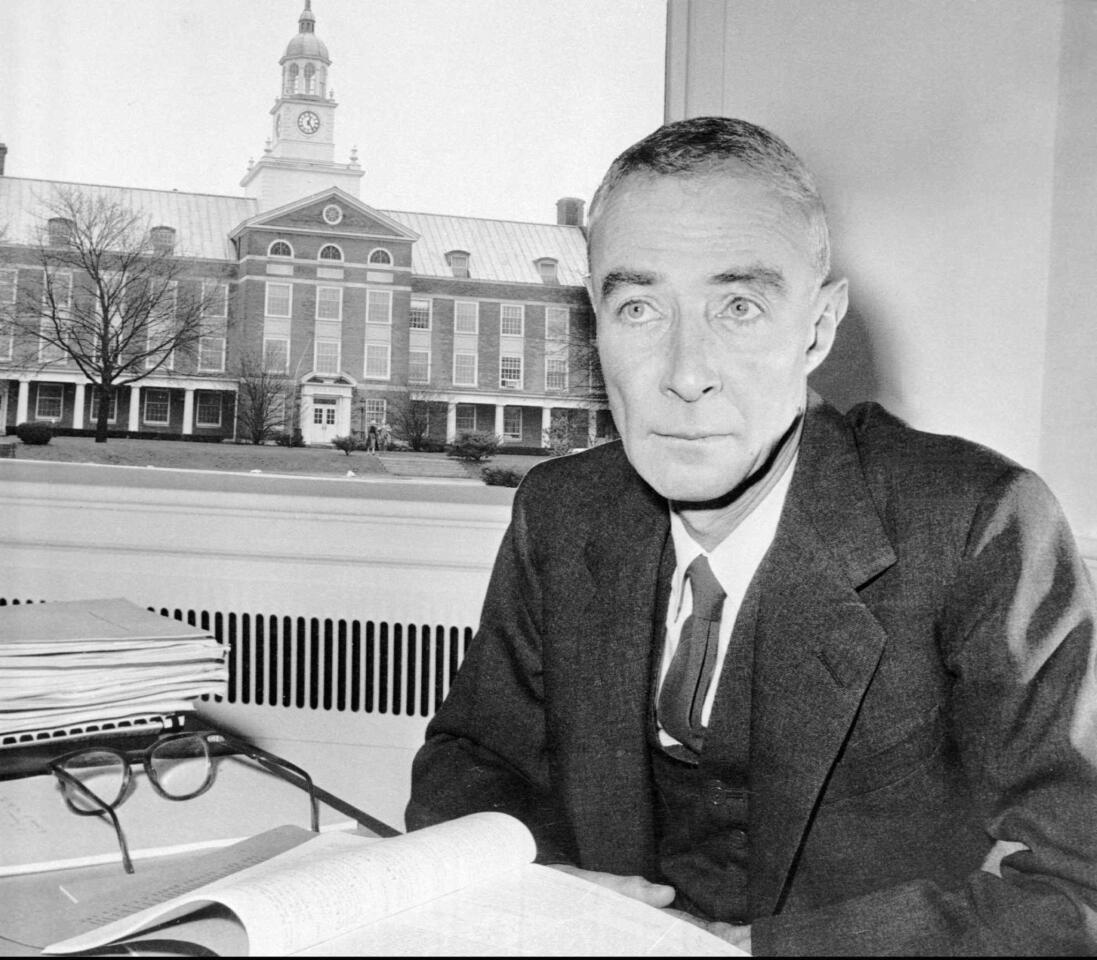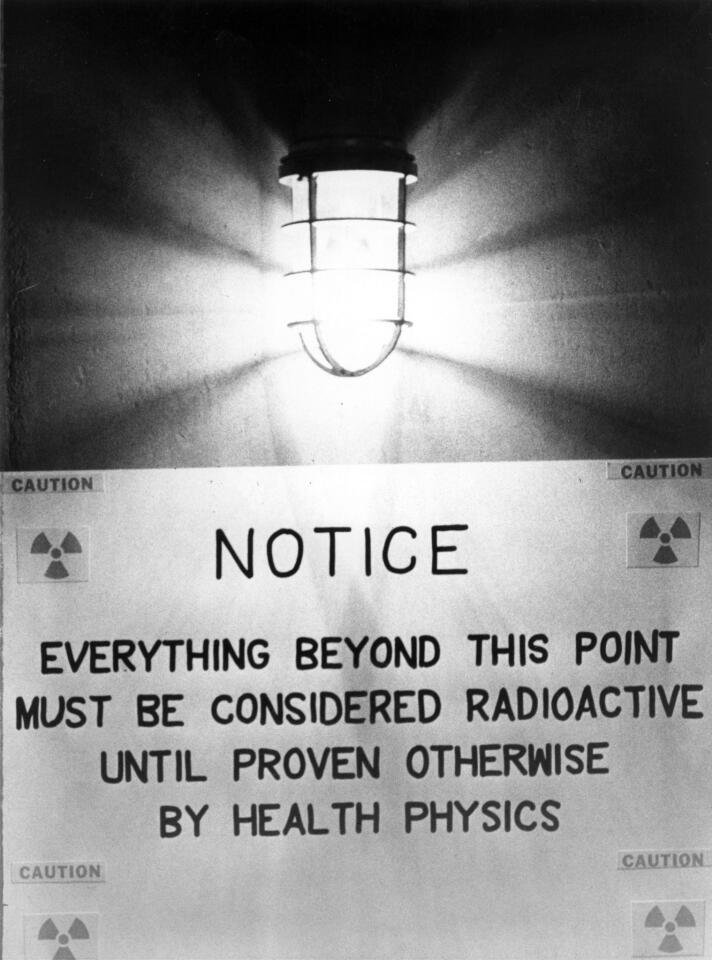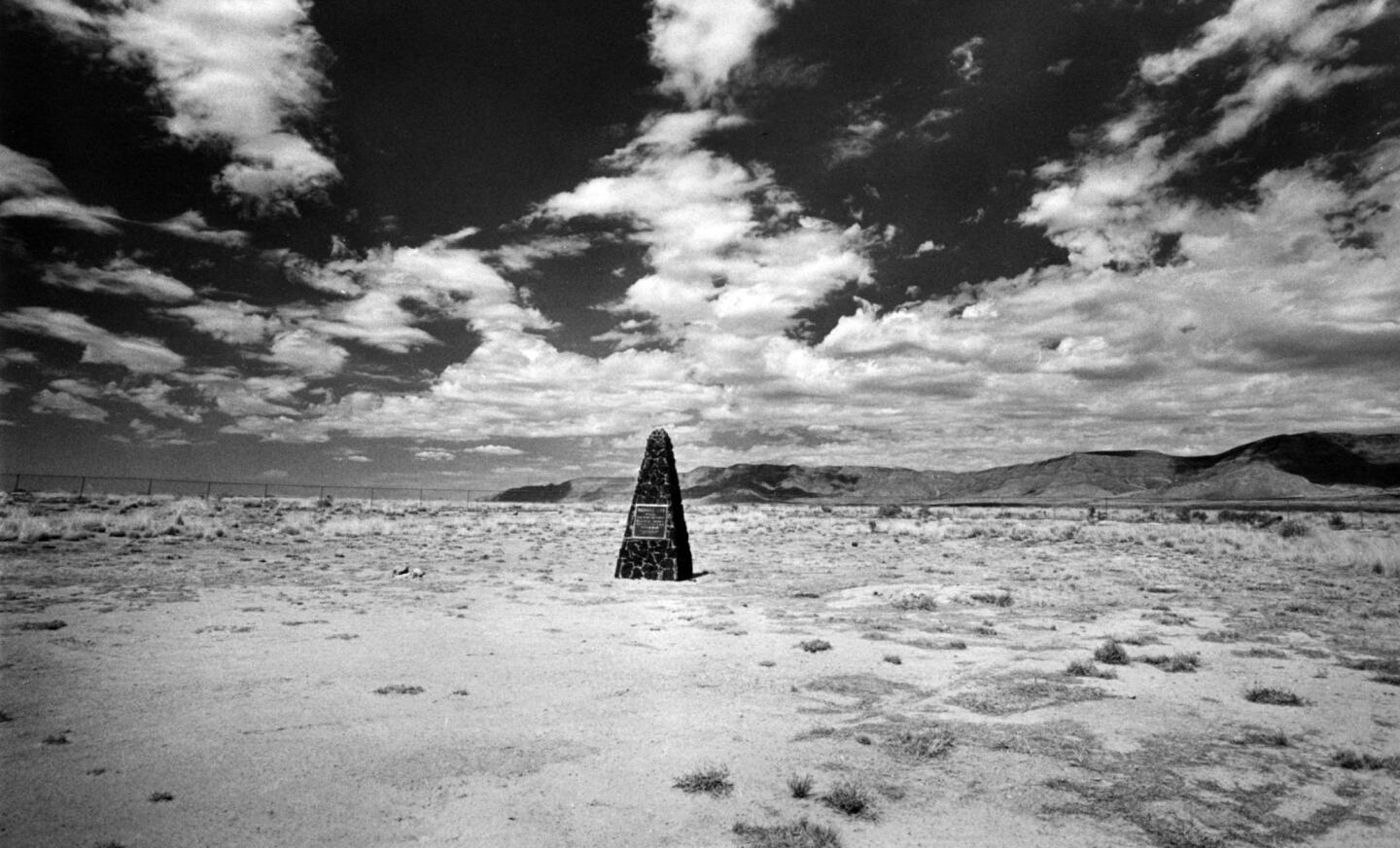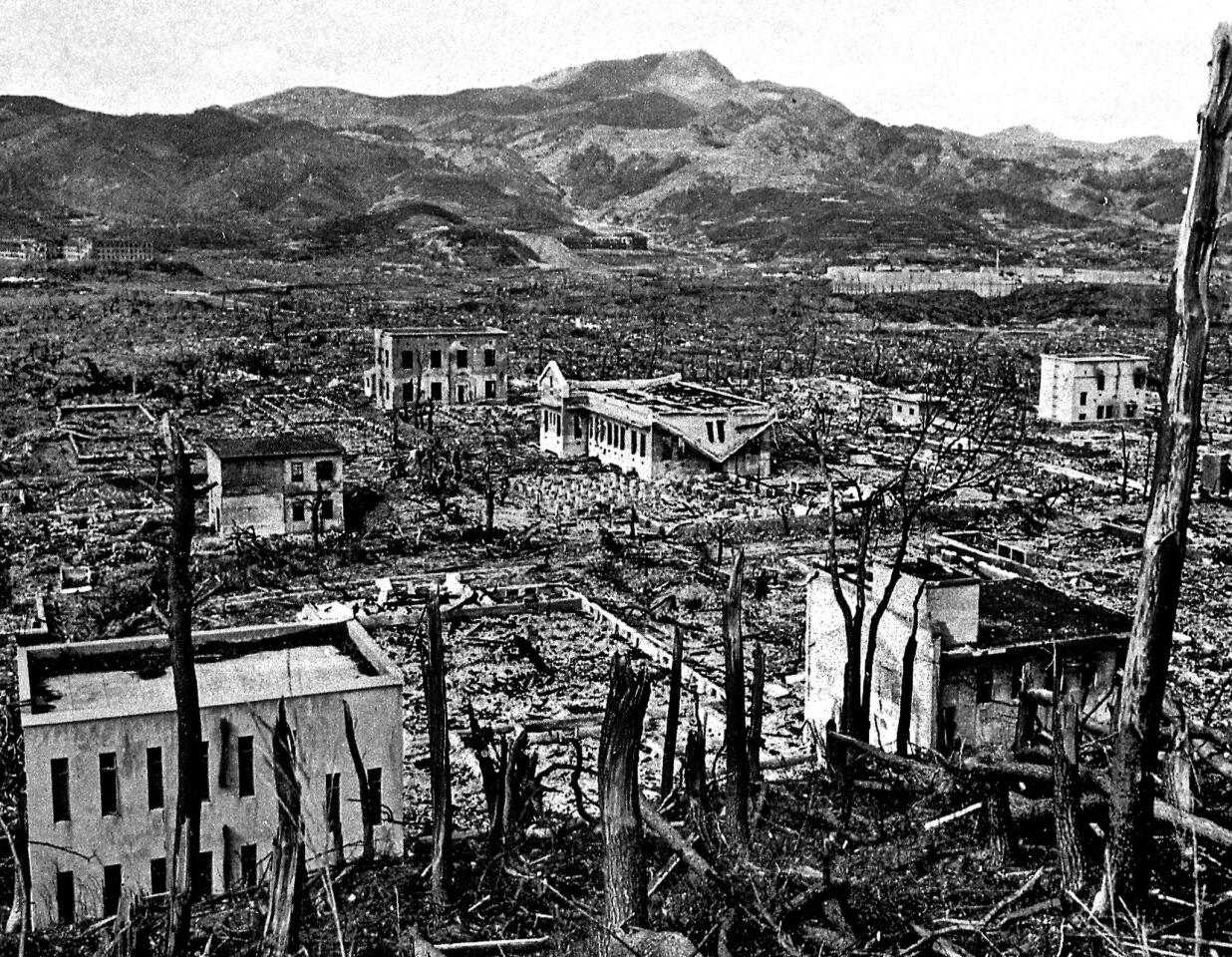Photos: A look back at the Manhattan Project

American physicist Dr. J. Robert Oppenheimer led the Manhattan Project, a research venture credited with developing the world’s first nuclear weapons during World War II. From 1942 to 1945 in Los Alamos, N.M., two types of atomic bombs were created, one gun-type, the other implosion. (File photo / Associated Press)
A look back at the Manhattan Project

Signs of caution were placed along the walls at the nuclear labs in Los Alamos, N.M. At one point, half of the chemists who worked with plutonium, the element placed in the core of the atomic bomb, had to removed from their work after high levels of the chemical appeared in their urine. (Greg Smith / Associated Press)

“Trinity Site,” pictured, marked the site of the first nuclear weapon to be detonated. The name is often traced to Manhattan Project leader J. Robert Oppenheimer as a reference to the poetry of John Donne. (John Malmin/Los Angeles Times)

Three days after the atomic bombing in Hiroshima, Japan, the U.S. dropped a second atomic bomb, codenamed “Fat Man,” on Nagasaki, killing an estimated 70,000 people shortly before the end of World War II. (Roger Viollet / Getty Images)







